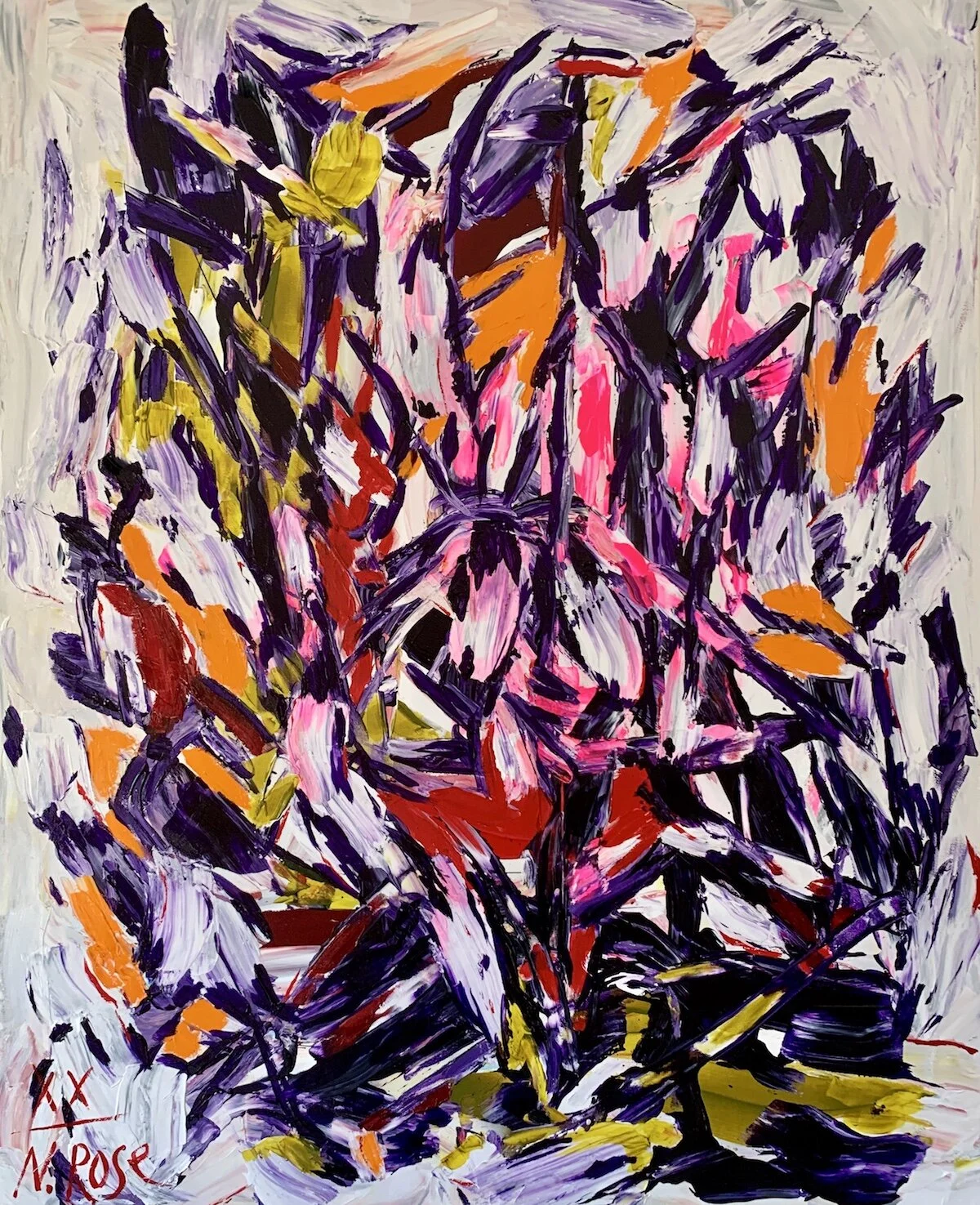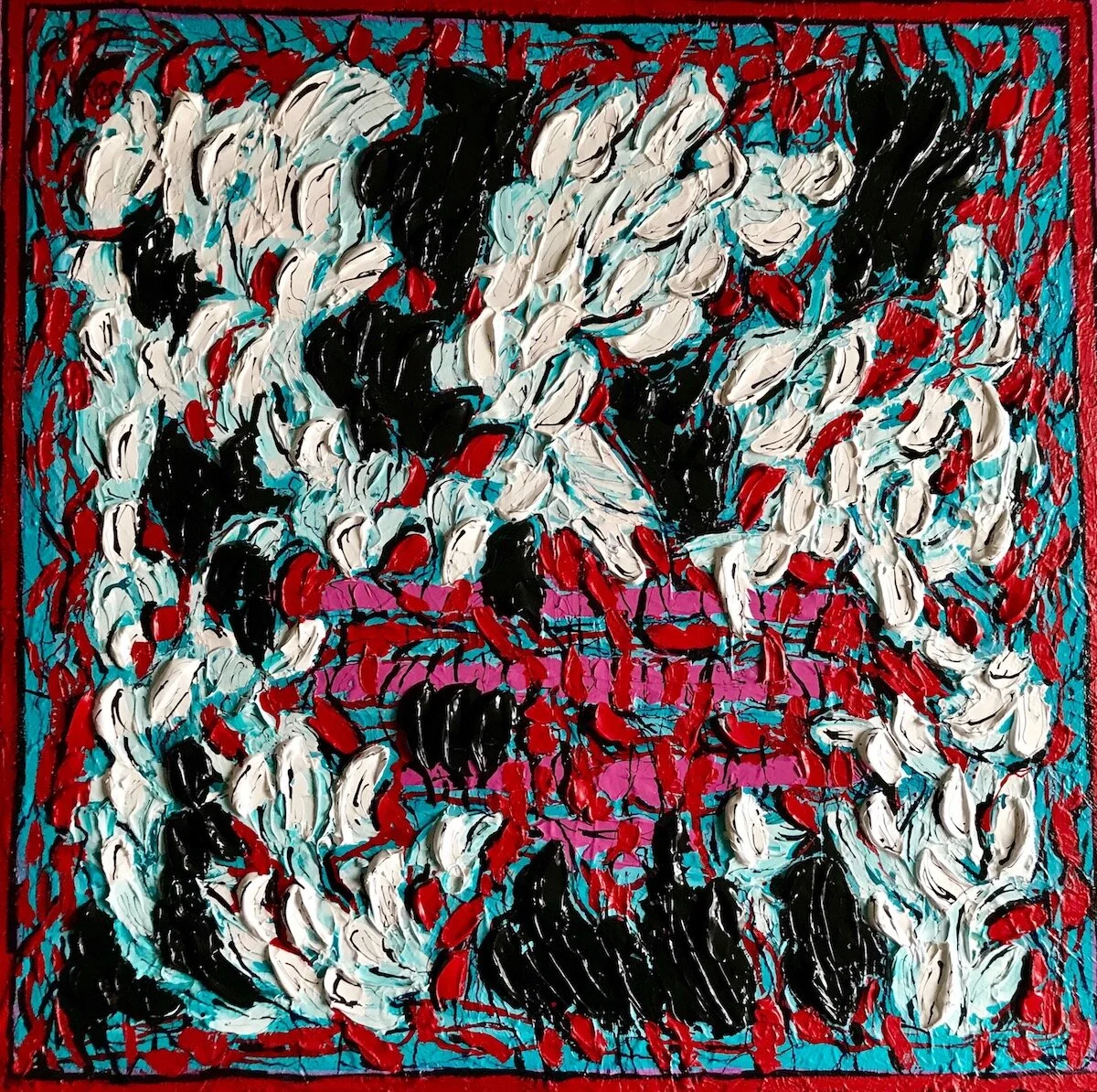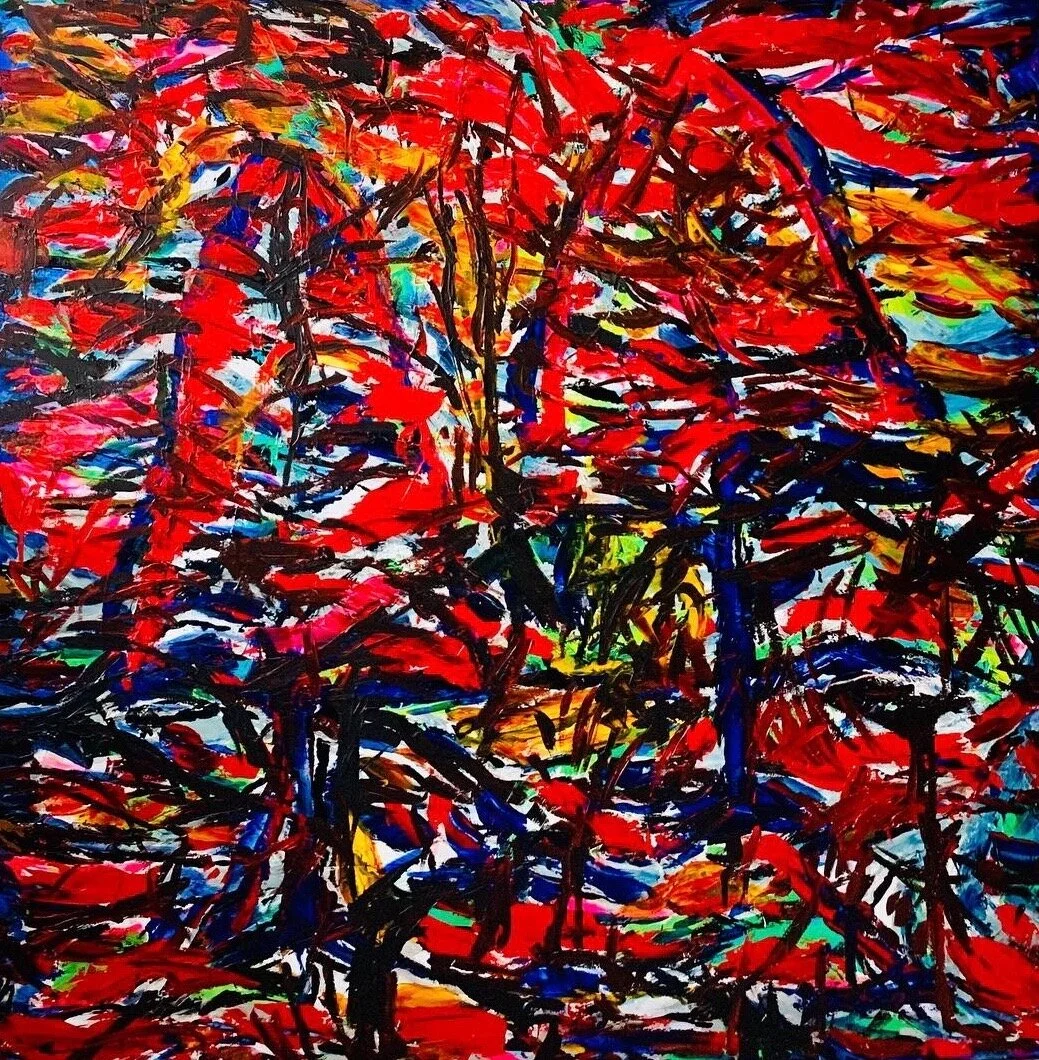Natalia Rose
Biography
Natalia Rose is a Danish artist best known for her semi-abstract works which feature pictograph-like symbols painting with broad and heavy brushstrokes. The artist raises questions about the nature of communication and the way in which one can express abstract and conceptual ideas through colour and iconographic markings. For example, in her painting “I” (2016), the artist uses only essential strokes to spell out his name and create patterns of letters across the canvas. Born in 1953 in Stavropol, Russia she studied at the Moscow State University and later at the University of Copenhagen. In 2014 the artist held her first exhibition in Copenhagen and since in New York, Paris, Amsterdam and London. Today, her works are held in the private collections across world, in Canada, Spain, Sweden among others. Natalia Rose lives and works in Copenhagen, Denmark.
Artist Statement
“As I starting a painting, I depart from the original idea and reach instead into the demands of the canvas before me. What’s coming through is telling me I must go elsewhere. So while I might give the opening direction, the painting, as it progresses through my mind and hands, determines its own process to completion.…The artist has to have a dialogue with what is being created.
My paintings do not depict things which I actually observe, but rather what I recall from the past, and more accurately, what I wish to see” Natalia Rose
What first prompted you to think of becoming an artist?
I can’t think of a time in my life that was void of a need to creatively express myself. Since I was a child, I was always making something: Designing and sowing dresses, writing for the school newspaper, painting, etc. It was my greatest source of joy to be in a flow state of expressing my ideas in different forms. Growing up in the Soviet Union, however, being an artist was associated with high uncertainty and made me discount this as a career path. I never stopped thinking creatively and cultivating images of art that I wanted to create. However, it wasn't until I had fully explored what a conventional career meant - or lacked for that matter - that I came to understand how much I longed to reconnect with that part of myself, and once I did approximately ten years ago, I felt that I became a whole person.
What kind of an artist do you ultimately see yourself?
I think of myself as a translator of culture and ideas but with enough ambiguity in my expression to leave room for interpretation. For me personally, I appreciate that whatever meaning you derive from art is ultimately a projection of your inner self, your dreams, desires and fears. Delacroix said that a good piece of art can say more than any text, and I think that's very true. Kandinsky compared art to language with a deep interconnection between the heart, mind and soul. I chose painting over writing as my form of expression, because art captures more nuances and emotions than words can. I am also impatient and crave fast results, and painting is the only medium where my ideas find their expression at the same speed as they appear in my mind. They are most often based on things I read, culture, literature, current and past history, and my canvases are large because I need space for every nuance of what I'm trying to convey.
What are you hoping to communicate to the viewer through your work?
I first and foremost want to communicate depth, complexity and nuance. I can't control what kind of meaning a person extracts from my art, and a painting can mean many things to different people. What I hope to convey consistently though, is a specific and vast array of emotion. I've been rebelling against perfection since a very young age, and insisting on making colour combinations my main form of expression over figurative images or geometric shapes removes the need for the viewer to make an association to any object in the real world. Pursuing a depiction of anything I've seen acts as a blocker of my subconscious, and my process is therefore a constant attempt at freeing myself from such constraints. My paintings do not depict things which I observe, but rather emotional moments I recall from the past, and even more so, what I wish to see. My art depicts the world as I want to see it, not as it is. I think that is the ultimate value in art, that it offers us a richer and more beautiful reality than the one we live in.I mean there is a forgotten place of being and things, which I need to remember. I want to see this place. I paint, what I want to see.“ Philip Guston
Can you explain the process of creating your work?
My style of painting has a story-telling attribute to it. The paintings are layered and have taken several reiterations to achieve their final result. When I paint, I layer and overpaint, add, subtract, erase and elaborate. Works can take months, even years, to complete. Each of my works is an expression of many paintings below the surface and you can find remnants of 10-15 different paintings in some of them. I don't believe in the notion of a 'right first time' when it comes to painting. Instead, I believe new meaning appears dynamically, and that you have to let go and let the work go on to complete itself. Sometimes over years.
What is your favorite part of the creative process?
My favourite part is the intermittent stage between having started with a certain level of direction, and then letting go and seeing what happens next. While I might give the opening strokes direction, the painting, as it progresses through my mind and hands, determines its own process to completion and this puts me in a state of complete creative freedom.
Can you give us an insight into current projects and inspiration, or what we can look forward to from you in the near future?
My work has been described as symphonic which I find poignant. I and am currently pursuing this connection to music in even greater depth. I think of art as language, and the language of music is especially interesting. I never played an instrument, but I treat paintbrushes the same way that a pianist or cellist would use their tools to trim sound. I am also exploring the term “unfinished” in the visual arts. There are works left incomplete and works that using a non finito—intentionally unfinished—aesthetic that embraces the unresolved. I can mention artists who explored this aesthetics including Cézanne and modern artists Jackson Pollock and Robert Rauschenberg, who have taken the unfinished in entirely new directions, blurring the distinction between making and un-making, extending the boundaries of art and inviting the viewers to make own interpretations. Finally, I am inspired by the looser norms of what constitutes 'good' art. In a way, the art world has become more inclusive, which leaves room for a much wider variety. I don’t necessarily agree with or like everything out there, but I appreciate that there is room for it and it gives me the courage to deliver an unpolished authentic expression of my inner self straight to an audience when I feel it’s ready.
Website: https://www.natalia-rose.dk/
Instagram: https://www.instagram.com/natarose53/
Between Black and White / Acrylic on linen / 100x100x4 cm
Cherry Blossom / Acrylic on canvas/ 100x80x2 cm
Lemons / Acrylic on linen/ 140x80x4 cm
Self-portrait in Red Dress / 80x80x2 cm
Strawberry Fields Forever / 100x140x2 cm
Landscape with the Trees / Acrylic on linen/ 150x150x2 cm









